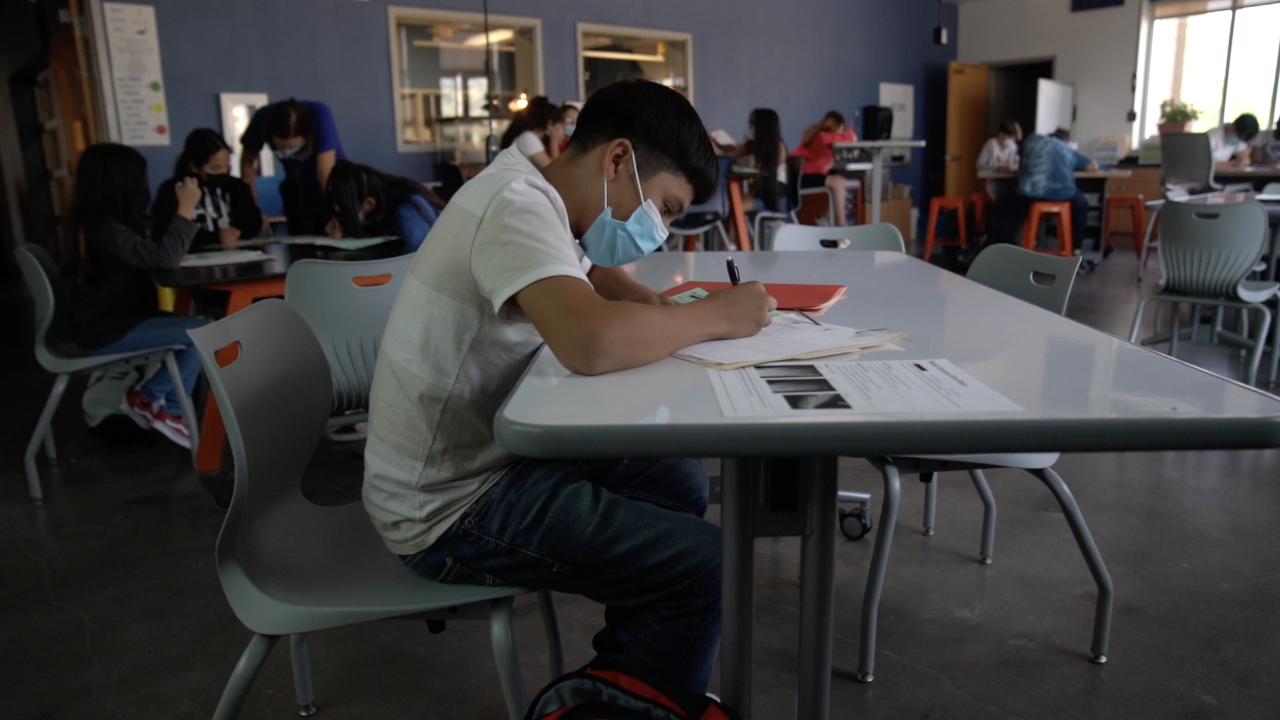OKLAHOMA CITY — The Oklahoma State Department of Education is discussing last school year’s standardized test scores.
Students have now had two school years with interruptions due to the pandemic. Because the state did not test in Spring of 2020, these scores are being compared to scores from Spring 2019.
OSDE released the statewide scores during a meeting Thursday.
The data shows an overall drop in performance on tests from 2019 to 2021. There was a 4.8 percent drop in Science, an 8.6 percent drop in English Language Arts and a 9.8 percent drop in Math.
“We know that math has been an area of certain grades, middle school particularly, where we’ve seen that learning loss and loss of momentum for some of our students," said State Superintendent Joy Hofmeister.
What factors go into a student’s test score performance? Enrollment and participation are big ones. And for the past 18 months, local factors from the impact of the pandemic. Oklahoma’s typical participation rate for statewide testing is about 98 percent to 99 percent. This year, it was about 91 percent to 92 percent.
Hofmeister said districts need to be careful when looking at the data.
“There may be a district that did not have as high a participation rate as a neighboring district, for example," Hofmeister said. "They may look better when you see the proficiency rate. It’s very important for the public and then for those districts to look at participation rate before they try to make any kind of comparison between classrooms, between schools, between districts.”
With that drop in the numbers, OSDE is asking districts to look deeper at the data to find those missing students who didn’t test and why.
“When we think about students that didn’t have the opportunity to test, we need to consider the demographic makeup of those students, where those students are now, and the local information that would have contextualized why that student didn’t have an opportunity to test," said Maria Cammack, deputy superintendent of assessment, accountability, data systems and research for the State Department of Education.
Like the statewide score, Bixby Public Schools test scores were lower than usual. Bixby Superintendent Rob Miller was vocal last spring about not wanting to test students.
“It was not appropriate to test our kids after the year that had gone by, a year-plus of disrupted learning," Miller said.
Miller said test participation at some Bixby schools was low due to some students in virtual learning or parents opting their child out of the tests. He said they won’t be focusing on their test scores, but are looking ahead at how to help students catch up.
“For us to try and drill down anymore, make sense of test results based on on a year like we had last year really takes our focus off where it needs to be, which is serving our kids that are in our classrooms today," Miller said.
Hofmeister is also looking to the future. She’s asking districts to focus on increasing tutoring and accelerated learning programs and get students back on track.
“Education is a marathon, not a sprint," Hofmeister said.
"But at the same time, I remain impatient for our kids to have the progress and the opportunity to learn and look at meeting the needs of the whole child.”
Hofmeister also wants school districts to look at the data closer before making big decisions about where they will spend their COVID relief dollars.
Stay in touch with us anytime, anywhere --
- Download our free app for Apple, Android and Kindle devices.
- Sign up for daily newsletters emailed to you
- Like us on Facebook
- Follow us on Instagram
- Follow us on Twitter



